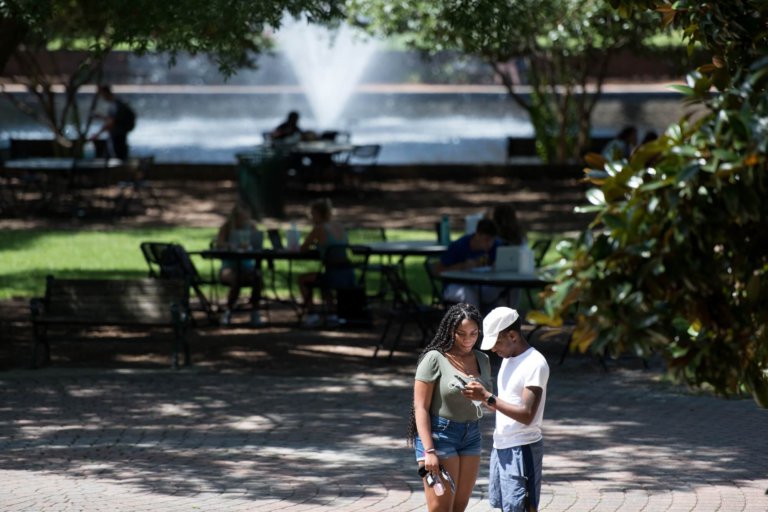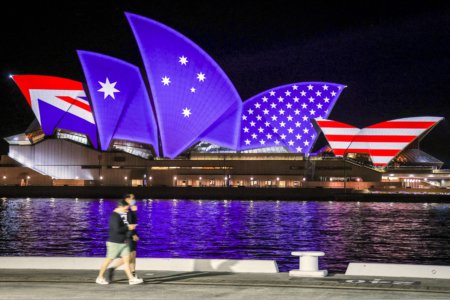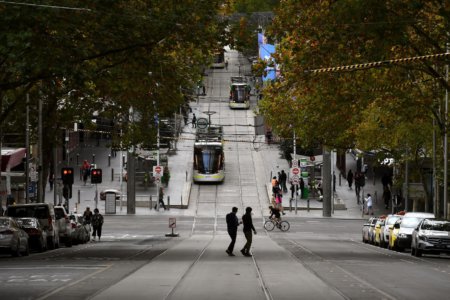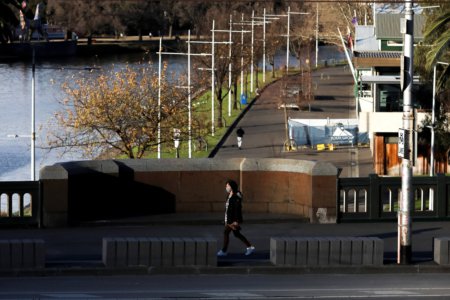
Before the COVID-19 pandemic, Australia was the third largest recipient of international tertiary students worldwide. Our lifestyle, geography, institutional reputation, and quality of teaching have been ongoing sources of attraction. This all came to a sudden halt in 2020.
While the sector remains hopeful it can recover the previous international student numbers, there’s a significant opportunity to take stock of the situation, address systemic challenges and champion change.
Globally, universities have upped their game in calling attention to the need for equity, diversity and inclusion (EDI) policies to address histories of exclusion, marginalisation and racism.
These initiatives have been very welcome and their implementation is long overdue.
But, among groups that aren’t as prominent in these debates are First Peoples, recently arrived migrants, refugees and asylum seekers.

Source: Alain Jocard/AFP
As one of the world’s most ethnically, linguistically and culturally diverse nations, Australia should be leading the way in welcoming and including students of all backgrounds – whether they are established residents or recently arrived migrants or refugees.
The attention focused on EDI is an opportunity for universities to rethink their work, look inwards and broaden their definition of how and to whom EDI policies should be applied.
In the context of contemporary displacement in countries like Afghanistan, Myanmar and potentially Ukraine, this work has become urgent. And, with the likelihood of increased climate refugees, it’s an issue that won’t go away.
The exclusion of refugees from higher education worldwide has become the subject of a new campaign from the United Nations High Commissioner for Refugees. The 15by30 campaign is designed to increase refugee participation from its current pitiful state where only five per cent of refugees worldwide have meaningful access to higher education.
In Australia, many refugees – including those that have taken the entirety of their high school study here on Temporary Protection Visas – are treated as international students and have no access to government support programs.
As a result, higher education places are unaffordable for most refugees, bar a fortunate few that can win one of the few scholarship places available at some universities.
Refugees and asylum seekers can face myriad other challenges in accessing universities ranging from adequate documentation of their status, the failure of Australian universities to recognise existing qualifications and difficulties studying in English.
The lucky few who win scholarships can find services in universities inadequate in identifying their support needs and understanding the experiences they have had to endure in making it to university in the first place.
As a first step in raising the profile of these issues, Welcoming Australia has launched the Welcoming Universities initiative.
Mirroring its existing work with Welcoming Cities and Welcoming Clubs and inspired by the UK Universities of Sanctuary movement, Welcoming Universities aims to forge a new coalition of accredited Australian universities determined to advance inclusion and belonging for people often excluded from the tertiary sector.

Source: Sean Rayford/Getty Images North America/Getty Images via AFP
The University of Melbourne has recently become an inaugural member of Welcoming Universities. The initiative builds on the University’s existing partnership with the City of Melbourne and its regional collaborations in areas like the Goulburn Valley, to increase engagement with affected communities.
Welcoming Universities hopes to facilitate collaboration across the Australian tertiary sector and enable the sharing of leading practice in areas including leadership, recruitment and retention, social and cultural inclusion, teaching and learning, and community engagement.
By working together, Australia’s university sector will also be in a stronger position to advocate for less exclusionary policy.
When Australian universities are being asked to diversify their student populations, it’s timely to consider the incredible resources that are literally on their doorstep.
This isn’t just a deficit model of universities realising their responsibilities and bringing more people from diverse backgrounds onto their campuses; it is also an opportunity to recognise the diversity of knowledge and experiences that should be present in our classrooms.
In this sense, the pursuit of greater inclusion is also an invitation to rethink current curricula and teaching to include a broader range of knowledge in the core of our work. On top of this, institutions must also reconsider the communities which universities are a part alongside the relationships between domestic and international students.
We will know we are welcoming universities when the people often excluded from higher education feel safe and valued, and University leadership, staff and students are representative of the rich diversity of Australia’s communities.
This article was first published on Pursuit. Read the original article.










